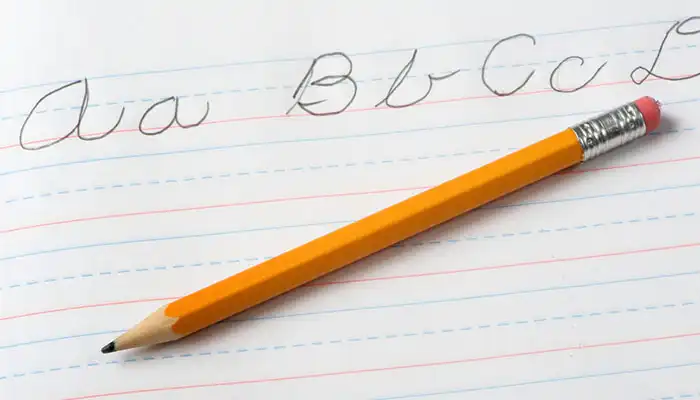Free Handwriting Practice Sheets for Beginners PDF: The Ultimate Guide for Parents and Teachers
When you begin to teach handwriting, it can be hard to find good resources. Free handwriting practice sheets for beginners PDF are very useful.
Why Handwriting Practice is Essential for Beginners
For a child, practising handwriting is not just about reproducing shapes on paper. Rather, it is an important source of foundational literacy for them. Handwriting practice for beginner is essential. Skills like fine motor, eye-hand coordination and cognitive development are built through handwriting practice for children.
Think of the joy that a child feels when they finally master their first letter. Practice does make perfect. If you’re a parent or a preschool teacher, those small wins matter, and they begin with the right tools – free handwriting worksheets.

What Makes a Good Handwriting Practice Sheet?
It is important to know that all handwriting sheets are not equal. When shopping for beginning handwriting worksheets, these are some of the features you should be looking for:
- Big, Clear Fonts — The bigger the letters are to trace, the easier they are for tiny hands to form.
- Dotted Lines for Tracing: This helps children understand the formation of each letter.
- Simple Instructions: She keeps in mind that most preschool children aren’t yet that familiar with letters.
For example, one might begin with a trace practice sheet before moving on to freehand writing. This is something that we recommend all the way down to the first-grader who wants to write their own stories but has trouble forming legible letters. As the child progresses, we might start by providing a little more scaffolding, such as word banks for specific topics, before gradually moving to independent practice.
Benefits of Using Free Printable Handwriting Sheets
Education can be expensive, no doubt, and so why not help your child or your student print and practise her handwriting with these cost-free printable worksheets?
These PDFs are quick and easy to download. Anyone could print out these lesson cards at home or in classrooms, and best of all, they can quickly adapt the lesson plan to address a child’s needs – whether it be concentrating on specific letters, words or even short sentence structures.
There’s another very large benefit: form. If your sheets are available for you to use, then you can use them day in and day out, making sure that practice is consistent – which is exactly what you want.
Integrating Handwriting Practice into Daily Learning
You might think, ‘How on earth am I supposed to squeeze handwriting practice into our already hectic schedule?’ Believe me, it’s easier than you think:
- Keep it short & daily: As little as 10-15 minutes a day of handwriting is effective if you stick to it beyond a week or two. Remember, consistency is key.
- Practice with Other Activities: Do some handwriting practice with storytime. Have your child write the letters of the words in the story.
- Have fun with it: do it with coloured pencils; stick a ‘letter of the day’ on the fridge; make a bit of a challenge out of it (eg, see how many minutes it takes you to trace that letter on the wall over and over while still tracing it the right way up).
Not only are these tinkerings more fun, they also enable the youngster to embrace handwriting time as something enjoyable rather than an ordeal.
Top Resources for Free Handwriting Practice Sheets
With that ‘why’ and ‘how’ addressed, let’s talk about the ‘where’. You can download free handwriting practice sheets PDFs for beginners on any of these sites:
- Education.com: A series of worksheets that provide everything from tracing to short-word practice.
- Twinkl.co.uk: Probably the most popular site for teachers, Twinkl produces sheets designed for different stages and abilities.
- K5 Learning: This site has a section of free printable educational worksheets that include handwriting practice sheets, not too hard or too easy.
It’s easy to download these resources, find them by theme and style, and have them fit with whatever your child might be interested in.
Customising Handwriting Practice Sheets for Your Child
No two children are the same, and no two children have the same needs where learning and development is concerned. What sets free handwriting practice sheets apart from an app will be your ability to customise them to cater to your child’s needs.
- Pinpoint trouble areas: your child has trouble with certain letters so search for sheets based on these letters.
- Write Their Name: Kids love to see their name in print. Use activity sheets that have spaces where the child can trace and then write his name.
- Spice up the contents: Don’t just break up the same letters. Use cards with short words or even numbers on them.
Keep in mind that the point is to make practice feel like a fun activity, not a burden, nudging them along a path to competence – and remembering to get excited about those small gains.
Common Concerns and How to Address Them
‘Should I be making my child/student practise handwriting every day? How far should I push when they get frustrated? How challenging does this handwriting stuff need to be?’ As a parent or teacher, you might have questions like these.
- How long to practise? Aim for no more than 10-15 minutes: just long enough to reinforce skills but not much more.
- When will I notice improvements? For the best results, it’s advisable to practice every day, if possible. You shouldn’t expect to learn perfect penmanship overnight, but within a few weeks, you should notice better-formed letters.
- My child struggles with letters X and Z. What should I do? Work on these letters, but work slowly. Isolate these two letters and do extra practice sheets including lots of tracing.
Encouraging Continuous Handwriting Practice
If your child has the knack, keep the energy levels high. You can do that like this:
- Level 2: Calendar: Offer helpful hints about the structure of the worksheet.• Level 3: Advanced Worksheets: Provide lots of praise for progress and steer them towards more difficult worksheets for writing sentences or cursive.
- Handwriting is a part of learning: write down words you hear from a science or maths lesson. It helps children not only with their handwriting, but also with other subjects.
- Track and congratulate them on improvements: Have them keep a portfolio of their work. Draw their attention to how far they’ve come by comparing early sheets with current sheets.
Wrapping It All Up
Learning to write is one of the foundational skills that ease a child’s entry into formal education. When armed with tools such as free first grade phonics practice worksheets pdf, you can make learning the handwriting craft enjoyable and productive.
Your child’s handwriting can get better each day. Will it start today? Download a couple of worksheets and set some time aside, and watch your child’s confidence – and their handwriting – develop.
Final Note
Because, when you think about it, it’s normal for kids to learn how to form letters by copying what’s there. So spare your preschooler the anxiety of not knowing where to start and allow them to practise their writing freely. By using our free printable handwriting practice sheets, we can turn every day into an opportunity to assist, teach and relax.
Making the Most of Free Handwriting Practice Sheets for Beginners PDF
So what can you do to make the most of these handwriting practice sheets for beginners PDF sheets? How do you make sure that your pupil or child is getting the best out of them? In this second part, we delve even further into the actionable strategies you can implement to optimise your cursive handwriting practice.
Integrating Fun into Handwriting Practice
Incorporating fun elements when using handwriting practice sheets PDF for free can reduce the monotonous feel of creating handwriting practice sheets PDF free for beginners. This approach can help reduce boredom and fussy behaviour in younger learners.
- Turn the practice into a game/chart kids’ progress Keep it fun by turning handwriting practice into a game – chart their progress along a simple line, and reward them for every milestone they achieve (eg, completing five sheets, or managing the letter that they found difficult).
- Colours Make the alphabet fun by incorporating colours. Coloured pencils or markers can be used, encouraging the child to copy the letters in her preferred colours.
- Story Integration Handwriting and story. Once your child attempts a letter or word, encourage him or her to add the letter to a sentence or story. It teaches sentence structure and creativity while reinforcing handwriting.

Addressing Common Handwriting Challenges
If you are using PDF free handwriting practice sheets for beginners, there are some challenges that might arise. Here’s how to handle them.
Issue: My youngster at goes a little nuts ploughing through those tricky letters.Solution: Break it down. When tackling the challenge of more difficult letters, try focusing on just one at a time. Offer praise to keep your little one’s confidence bumping along. Start with some simple letters and work your way up to the more tricky ones.
Problem: Children are getting bored with some of the handwriting sessions.Solution: Mix it up.Some of the days, use worksheet of only lowercase letters.Other days, worksheet of short words, or short sentences. Mix between tracing, copying, and freehand writing.
Slow progress? Remain patient. Consistency is the key. The difference is a long process if you are a beginner. Celebrate small victories. Practice often.
Leveraging Technology with Handwriting Practice
Incorporating technology into handwriting practice can provide an additional layer of engagement.
Digital PDFs with Stylus If your child has a tablet, use a stylus with the digital PDF, which can make the experience feel fresh and technical – especially for kids.
Handwriting AppsA range of apps exist that accompany a traditional handwriting practice sheet to act as an interactive companion piece as your child works through writing practice sheets. These apps can include immediate feedback, as well as other practice opportunities to keep your child motivated.
Expanding Beyond Letters
Once your child or student is comfortable with basic letters, other features of cursive handwriting can be taught:
Add Some Numbers and Some Words Now start adding numbers and some words to the worksheets. Numbers are great because they break up the monotony of single-letter words without having to write more difficult words.
Simple SentencesGraduate to writing simple sentences. You should work your way towards more complicated sentences as your confidence grows; both improving your handwriting and your sentence structure.
Handwriting Cursive If your child is interested, you can teach him or her the basics of cursive writing. There are free cursive worksheets available to practise for beginners.
Answering Frequently Asked Questions (FAQs)
Q: How many times per week should my child practise handwriting?
A: Try to do so on a daily basis even if it’s only for 10 minutes. Consistency is the key on becoming fluent and improving handwriting skills.
Q: My child has difficulty with a certain letter. What should I do?
A: Practice that letter at a time. Simply give extra worksheets of the letter out of the curriculum that has nothing to do with the lesson, just that troublesome letter. There are also other websites with worksheets breaking apart a letter to help master it.
Q: When should I start with upper case letters or lower case letters?
A: It really depends on how comfortable your child is writing the different letters. Some children find upper case letters easier to start off with because they have simpler, straighter lines, but beginning with both of them can avoid confusion in the long run.
How to Monitor Progress Effectively
Tracking progress is a key part of ensuring successful usage of the free handwriting practice sheets for beginners PDF. Here’s how to do it:
Keep a Progress Journal This will be another binder with a series of sheets printed on one side only. Paste sheets into the binder after completion of each step; both you and your child will now have a visible chronology of improvements as they happen over time. You can also note progress on specific skills.
Regular Progress Reviews Every few weeks, spend a few minutes reviewing past worksheets with your child. Look for progress, such as improvements in letter formation, spacing and neatness. Celebrate the good news to keep motivation up.
Keep your weekly goal realistic Maybe you want to build up your repertoire of letters, or improve the legibility of some words – just keep each weekly goal realistic, or you’ll become frustrated.
Advanced Tips for Sustained Handwriting Practice
After mastery of these basics, you can challenge with these advanced tips:
Dictation Exercises 1. Have your child write down a few simple sentences that you dictate to them. This will sharpen listening, develop quick thinking, especially in terms of comprehension, and improve speed of handwriting.
- Write with purpose Include handwriting as part of their daily tasks, such as writing their own grocery lists or thank-you notes, or even their own stories. It reinforces that handwriting is a useful life skill.
- Make it peer review If possible, have children review each other’s handwriting in pairs. It is a great way to build critical-thinking skills — and empathy.
Wrapping Up Your Handwriting Practice Journey
If your little one s building his handwriting from scratch with the help of the free handwriting practice sheets for beginners PDF, he s in for a treat. It s a lot more than just making the letters. It actually builds confidence, brain power and the necessary skills to succeed in school.
If you apply these strategies and tips, you will guarantee that your child or student is not only improving their handwriting but also having fun along the way! Every child is different, so it is important not to force anyone but to be patient and consistent.
And trust me, children who can write (by hand) will have a leg up in school – and in life – from kindergarten all the way through to college graduation. So keep on writing! I promise you, your child’s skills – and confidence – will improve.
Ultimately, my advice is to keep it light and playful, and make sure it gets used consistently. Best of luck writing with your right hand!



